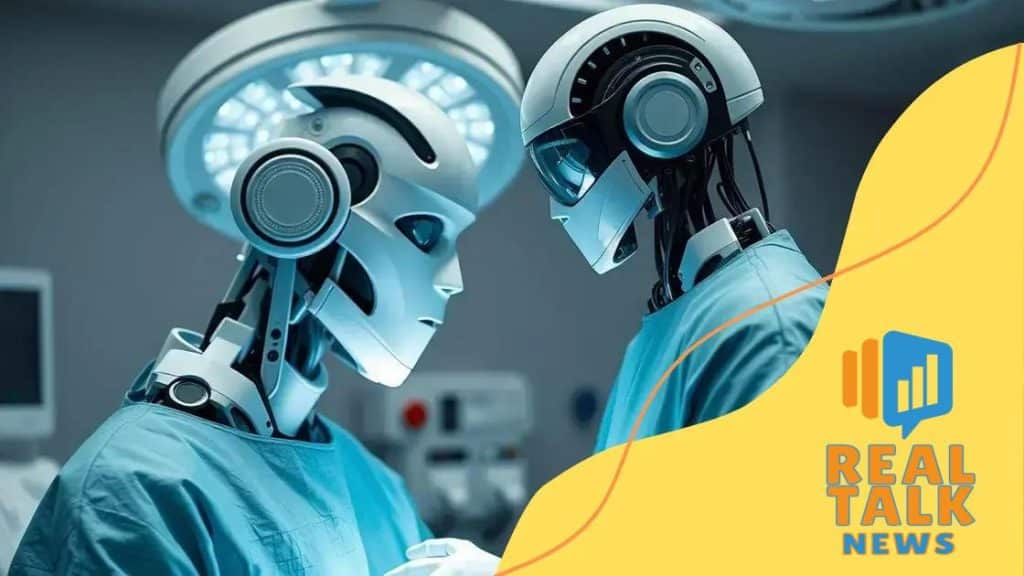How robotics is shaping the future of healthcare delivery

Robotics is shaping the future of healthcare delivery by enhancing surgical precision, improving rehabilitation, and enabling real-time patient monitoring, ultimately leading to better patient outcomes and more efficient care systems.
How robotics is shaping the future of healthcare delivery is an exciting journey we’re on. Imagine a world where surgical robots assist doctors, making procedures safer and more precise. Curious about the impact of these innovations on patient care? Let’s dive in.
The role of robotics in surgery
The role of robotics in surgery is revolutionizing how operations are performed today. Surgeons are now using robotic systems to enhance precision and reduce recovery time for patients. These advanced tools allow for minimally invasive procedures, which means smaller incisions and fewer complications.
Advantages of Robotic Surgery
Robotic systems provide several key benefits. First, they offer unmatched precision, greatly minimizing the risk of human error. Next, the enhanced visualization allows surgeons to see detailed images of the surgical area. This technology also enables surgeons to perform complex tasks in hard-to-reach areas.
- Improved surgical accuracy
- Reduced patient recovery times
- Less pain and scarring
- Increased surgical dexterity
In addition to these advantages, robotic surgery often leads to shorter hospital stays and quicker returns to normal activities. Patients appreciate the less invasive approach, which contributes to better overall satisfaction with their healthcare experience.
Types of Robotic Surgical Systems
There are several types of robotic surgical systems, each designed for specific tasks. Some of the most popular include:
- Da Vinci Surgical System
- Robotic-assisted orthopedic surgery systems
- Robotic systems for urological procedures
These systems are equipped with state-of-the-art technology that allows for a wide range of surgical procedures. They have transformed fields like urology, orthopedic, and gynecological surgery. With constant advancements in technology, their capabilities continue to evolve.
How robots enhance rehabilitation
How robots enhance rehabilitation is an important aspect of modern healthcare. These advanced machines are designed to assist patients in their recovery journey, offering support in physical therapy and other rehabilitation processes. With their help, patients can regain strength and mobility more effectively.
Benefits of Robotic Rehabilitation
Robotic rehabilitation provides numerous advantages for patients. First, it offers personalized therapy tailored to individual needs. This personalized approach leads to better outcomes and increased motivation during recovery. Additionally, robots can provide consistent support, enabling patients to participate in therapy sessions that may have been difficult without assistance.
- Customized therapy sessions
- Increased patient engagement
- Consistent progress tracking
- Reduction in therapist workload
Moreover, robots can help patients recover faster by providing repetitive motion exercises that are essential for building strength. These machines are capable of performing tasks not only for physical rehabilitation but also for cognitive therapy. By combining physical assistance with cognitive challenges, robotics can improve overall rehabilitation outcomes.
Types of Rehabilitation Robots
There are various types of rehabilitation robots utilized in therapy, each designed with specific functions in mind. Some of the most common include:
- Exoskeletons for mobility training
- Robotic arms for fine motor skill development
- Virtual reality systems for engaging therapy experiences
These innovative tools are making rehabilitation more efficient and accessible. They not only assist physical therapists but also empower patients to take an active role in their recovery process.
Automation in hospital management

Automation in hospital management is transforming how healthcare facilities operate. By utilizing advanced technologies, hospitals can improve their efficiency and service quality. This change allows staff to focus more on patient care rather than administrative tasks.
Benefits of Automation
One major benefit of automation is the reduction of human error. Automated systems can handle repetitive tasks with high accuracy, which leads to better patient outcomes. In addition, automation speeds up processes such as patient admissions and billing, making the overall experience smoother for everyone involved.
- Enhanced data accuracy
- Faster patient processing
- Improved resource allocation
- Increased staff productivity
Moreover, automation can optimize supply chain management within hospitals. By tracking inventory in real-time, hospitals can ensure that they have the necessary supplies available when they are needed. This efficiency minimizes waste and reduces costs.
Types of Automated Systems
There are various types of automated systems used in hospital management. Some key examples include:
- Electronic health records (EHR)
- Automated scheduling systems
- Telemedicine platforms
These systems streamline communication between departments and improve patient access to care. By integrating technology into hospital management, facilities can enhance operational workflows and provide a better patient experience.
Patient monitoring systems powered by robotics
Patient monitoring systems powered by robotics represent a significant shift in healthcare technology. These systems utilize advanced robotics to continuously track patient health data. This innovation allows for timely interventions, ensuring better patient outcomes.
Key Features of Robotic Monitoring Systems
One essential feature of robotic patient monitoring is real-time data analysis. These systems can monitor vital signs like heart rate, blood pressure, and oxygen levels, providing healthcare professionals with immediate information. This swift response capability is particularly critical for patients in critical condition.
- Continuous health tracking
- Early detection of complications
- Automatic alerts for healthcare providers
- Integration with electronic health records
As technologies advance, these monitoring systems are becoming more accurate and reliable. They often use machine learning algorithms to learn from patient data, adapting to individual health needs over time. This adaptability empowers both patients and healthcare providers.
Benefits for Patients and Providers
Robotic monitoring systems benefit patients in numerous ways. For instance, they reduce the need for manual checks, freeing up nursing staff to focus on patient care. Additionally, these systems can enhance patient safety by promptly alerting staff about changes in a patient’s condition.
- Improved patient safety
- Reduced hospital stay lengths
- Enhanced patient satisfaction
Moreover, automation of data collection minimizes the chance of human error, ensuring accurate records that are crucial for effective treatment. Overall, robotic systems in patient monitoring are paving the way for a more efficient and responsive healthcare environment.
Future trends in healthcare robotics
Future trends in healthcare robotics are shaping the way we think about medical care. As technology advances, the role of robots in healthcare continues to expand, promising more efficient and effective solutions. The integration of advanced robotics in various aspects of medicine could greatly improve patient outcomes.
Emerging Technologies
One of the most notable trends is the advancement of artificial intelligence (AI) in robotic systems. AI allows robots to learn from data, making them more adept at performing complex surgeries and tasks. This will lead to greater precision in procedures and fewer complications.
- AI-driven surgical assistants
- Smart robots for rehabilitation
- Enhanced imaging and diagnostic tools
Moreover, the development of wearable robotics is gaining momentum. These assistive devices can help patients regain mobility and function after injuries or surgeries. By providing support in real-time, they enhance rehabilitation processes and improve quality of life.
Collaboration with Telemedicine
Another important trend is the collaboration between robotics and telemedicine. This partnership enables remote surgeries and consultations, allowing specialists to operate from far away. This not only improves access to care but also expands the reach of advanced medical techniques.
- Remote robotic surgery
- Real-time monitoring through connected devices
- Access to specialists worldwide
As these technologies continue to develop, they will likely play a crucial role in the future of healthcare. By combining robotics with telehealth, we can create a more connected healthcare system that meets the needs of patients everywhere.
FAQ – Frequently Asked Questions about Healthcare Robotics
How will robotics change surgery?
Robotics will enhance surgical precision, reduce recovery times, and decrease the risk of complications during procedures.
What are the benefits of robotic rehabilitation?
Robotic rehabilitation offers tailored therapy, consistent support, and helps patients regain mobility more effectively.
How do patient monitoring systems work?
Patient monitoring systems track vital signs in real-time, alerting healthcare providers to any changes in patient condition.
What should we expect from the future of healthcare robotics?
The future will see more AI integration, wearable robotics, and enhanced collaboration with telemedicine for better patient care.





